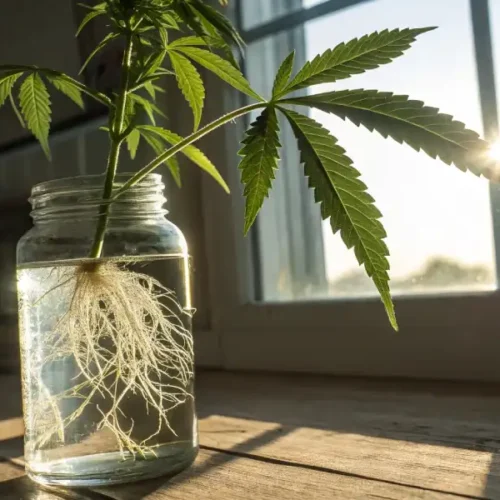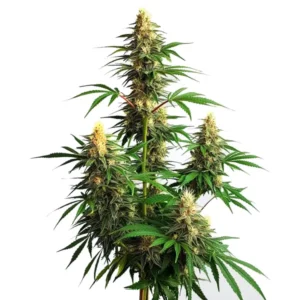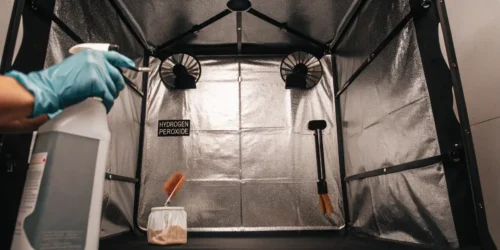If you’re wondering whether it’s ok to flush during flower, you’re not alone. Many cannabis growers debate the timing and necessity of flushing plants during the flowering stage. Flushing is a technique that involves watering your plants with plain water to remove excess nutrients from the soil, ensuring your buds develop with a cleaner taste and better potency. In this article, we’ll explore the reasons behind flushing during flower, how it affects your plants, and how to do it properly.
What Is Flushing During the Flowering Stage?
When growing cannabis, one of the most debated techniques is whether it’s necessary to flush plants during the flowering stage. Flushing involves giving your plants only water, with no added nutrients, to clear out any residual salts or chemicals in the soil or growing medium.
Knowing the Purpose of Flushing
The main reason growers ask if it’s ok to flush during flower is to ensure the final product is free from excess nutrients that can affect the flavor and quality of the buds. Over time, cannabis plants can accumulate salts, nutrients, and other compounds in the growing medium. If these aren’t flushed out before harvest, they can alter the taste, making your buds harsh or unpleasant to smoke.
By flushing with plain water, you help your plants use up the nutrients they’ve already absorbed, leading to a cleaner and smoother smoke. Growers who flush their plants often notice a difference in the taste and aroma of their cannabis, which is why many argue it’s important to flush during the flowering stage.
How Flushing Affects Nutrient Absorption in Plants
During the flowering stage, cannabis plants shift their focus from growing leaves and stems to developing buds. This is when the plant is using nutrients like phosphorus and potassium to fuel the growth of dense, resinous flowers. However, if too many nutrients are present in the soil, they can actually hinder the plant’s ability to produce high-quality buds.
When you flush your plants, you’re essentially forcing them to use the nutrients stored within their tissues, rather than relying on what’s in the soil. This can improve nutrient absorption and allow the plant to focus on creating better-quality buds. For growers learning about how ok it is to flush during flower, this process can be key to improving the overall harvest quality.
Promos & Deals
Is It OK to Flush During Flower?
The question of whether it’s ok to flush during flower has sparked debate among growers, but many agree that it can offer significant benefits. However, it’s important to weigh these benefits against potential risks to ensure that flushing is done properly.
Benefits of Flushing Your Cannabis Plants
Flushing cannabis plants can lead to several positive outcomes for your harvest. First, it helps prevent the buildup of nutrients in your buds, which can lead to a cleaner, smoother smoke. Many growers report that properly flushed cannabis burns better, tastes more flavorful, and has a more potent aroma than unflushed buds.
Additionally, flushing encourages the plant to use up any excess nutrients in its system. This results in a more natural ripening process, allowing the buds to mature without interference from leftover salts or chemicals. For those asking whether it’s ok to flush during flower, these benefits are often the deciding factor.
Potential Risks of Flushing During Flower
While flushing has its advantages, there are potential downsides if it’s done incorrectly. One risk is that flushing too early or for too long can deprive the plant of essential nutrients during the critical flowering stage. This can stunt bud growth or reduce overall yields.
Another concern is that flushing might cause stress to the plant, especially if it’s done too abruptly. Plants that are used to receiving nutrients might react negatively to being suddenly switched to plain water. This is why it’s important to know the timing and method behind flushing when learning how to decide if it’s ok to flush during flower.

When Is the Best Time to Flush Cannabis?
Timing is everything when it comes to flushing. Doing it too early or too late can have negative effects on your crop, so it’s essential to know when your plants are ready for flushing.
Signs That Your Plants Are Ready for Flushing
Cannabis plants show specific signs when they’re nearing the end of the flowering stage and are ready to be flushed. One of the clearest indicators is the appearance of the trichomes, which are tiny, resinous glands on the buds. When the trichomes start to turn from clear to cloudy or milky white, your plant is approaching maturity, and it’s time to start flushing.
Another sign is the color of the pistils, the tiny hairs on the buds. As the plant reaches the end of its flowering cycle, these pistils will change from white to a reddish-brown color. This is a good visual cue that your plant is nearing harvest, and it’s ok to flush during flower at this stage.
How Long Should You Flush During the Flowering Stage?
The duration of the flush can vary depending on the grower’s preference and the specific strain of cannabis. However, most growers recommend flushing for about one to two weeks before harvest. This gives the plant enough time to clear out excess nutrients while still allowing it to mature fully.
During this flushing period, water your plants with pH-balanced water (around 6.0 to 6.5 for soil-grown cannabis) and avoid adding any fertilizers or nutrients. By the end of the flushing process, your plant should have used up the stored nutrients, resulting in a cleaner and smoother final product. Knowing how long to flush is essential when considering whether it’s ok to flush during flower.
How to Properly Flush Cannabis During Flowering
Flushing your cannabis plants correctly is vital to reaping the benefits without causing stress or nutrient deficiencies. Following a step-by-step approach will help ensure your flush is effective.
Step-by-Step Guide to Flushing Cannabis
- Prepare Your Water: Use pH-balanced water to flush your plants. If you’re growing in soil, aim for a pH of 6.0 to 6.5. For hydroponic systems, the ideal pH is between 5.5 and 6.0.
- Water Generously: When flushing, you’ll need to give your plants a lot more water than usual. Water the plant until you see runoff coming from the bottom of the pot. This helps to ensure that salts and excess nutrients are being washed away from the root zone.
- Monitor Plant Response: Keep an eye on your plants during the flushing period. Look for signs that they’re using up their stored nutrients, such as yellowing leaves and a gradual change in the overall color of the plant.
- Continue Until Harvest: Flushing should be done for about one to two weeks, depending on the strain and the health of your plants. As harvest approaches, your plants should appear more mature and ready for trimming.
Best Watering Techniques for a Successful Flush
For an effective flush, you need to use the right watering techniques. Flushing requires more water than normal, so it’s important to ensure the water is properly distributed throughout the root zone. Make sure to water until you see runoff, which indicates that the excess nutrients are being washed away.
Some growers recommend using filtered water to avoid introducing new contaminants during the flush. If possible, use water that is free from chlorine and other chemicals that can negatively affect the flavor of your cannabis. This extra step ensures that your flush is as clean and effective as possible.
Questions About Flushing During Flowering
As with any cannabis-growing technique, there are plenty of questions surrounding whether it’s ok to flush during flower. Many growers are curious about the specific benefits of flushing, how it impacts flavor and potency, and whether it can help prevent certain issues like nutrient burn. Additionally, concerns arise when lights are accidentally left on during flowering, and understanding how this affects your plants is crucial. Let’s explore some of the most common questions to help you make the best decision for your plants.
Does Flushing Improve Flavor and Potency?
One of the most widely debated aspects of flushing is whether it actually improves the flavor and potency of your cannabis. Growers who practice flushing believe it helps produce a cleaner, smoother smoke by removing excess nutrients that can lead to a harsh or bitter taste. When salts, fertilizers, and other additives build up in the plant’s tissues, they can affect the overall smoking experience.
By flushing, you give the plant a chance to use up the nutrients it has stored, which can result in a purer taste and more natural aromas. For those asking if it’s ok to flush during flower, many experienced growers argue that the improved flavor alone makes it worth the effort.
As for potency, the relationship between flushing and cannabinoid content is less clear. While flushing doesn’t necessarily increase THC or CBD levels, it does ensure that your buds are free from the chemicals that can degrade the smoking experience. Clean, well-flushed buds may feel more potent because they produce a smoother hit, allowing the cannabinoids to be fully appreciated.
Can Flushing Prevent Nutrient Burn?
Another reason growers consider flushing is to prevent or correct nutrient burn. Nutrient burn occurs when plants receive too many nutrients, leading to the tips of the leaves turning brown and crispy. This is a common problem in cannabis cultivation, especially during the flowering stage when growers often increase nutrient levels to support bud development.
If you notice signs of nutrient burn, flushing your plants with plain water can help wash away the excess nutrients and give the plants a chance to recover. This makes it ok to flush during flower, as it can prevent further damage and help your plants finish the flowering stage in better condition.
Keep in mind that while flushing can help reverse minor cases of nutrient burn, it won’t necessarily fix the problem if the plants are already too far gone. The key is to catch nutrient burn early and flush the plants before the damage becomes irreversible.
Flushing in Different Growing Mediums: Soil vs. Hydroponics
The process of flushing can vary depending on the growing medium you’re using. Whether you’re growing in soil or hydroponics, knowing the differences will help you make the best decision about when and how to flush your plants during the flowering stage.

Flushing Cannabis Grown in Soil
For growers using soil as a growing medium, flushing is a relatively simple process. Soil naturally holds onto nutrients, which means you’ll need to flush thoroughly to ensure all excess salts and fertilizers are washed away. When flushing in soil, water your plants with pH-balanced water until you see significant runoff from the bottom of the pot. This indicates that the excess nutrients are being flushed out of the soil.
Flushing in soil typically takes longer than in other mediums because soil retains moisture and nutrients. For this reason, many growers choose to start flushing their plants two weeks before harvest. This ensures enough time for the plant to use up the remaining nutrients stored in its tissues and produce cleaner buds.
Flushing Cannabis Grown in Hydroponics
Flushing in a hydroponic setup is a bit different. Since hydroponic systems deliver nutrients directly to the roots through water, plants grown in this environment are more sensitive to nutrient levels. The good news is that flushing in hydroponics is quicker because there’s no soil to hold onto the nutrients.
To flush in hydroponics, simply replace your nutrient solution with plain, pH-balanced water. Run this water through the system for a few days to one week before harvest. This should give the plants enough time to clear out excess nutrients and prepare for harvest. Many hydroponic growers find it ok to flush during flower because it leads to cleaner, smoother buds without the long waiting period required in soil-based grows.
The Debate: To Flush or Not to Flush?
As you explore whether it’s ok to flush during flower, it’s important to recognize that the decision to flush is not universally agreed upon in the cannabis community. Some growers swear by flushing, claiming that it improves the flavor, smoothness, and overall quality of their buds. Others argue that flushing isn’t necessary, especially if the plants have been grown in well-balanced conditions with proper nutrient management.
Arguments for Flushing
The primary argument in favor of flushing is that it removes excess nutrients, salts, and chemicals from the plant, resulting in a cleaner end product. Growers who flush often report that their cannabis burns more evenly, tastes smoother, and doesn’t have the harsh chemical aftertaste that can sometimes result from nutrient buildup.
For organic growers, flushing is often viewed as a way to ensure the natural flavors and aromas of the cannabis shine through. By removing any lingering fertilizers, the plant’s true terpene profile is able to fully develop, leading to a more aromatic and flavorful final product.
Arguments Against Flushing
On the other side of the debate, some growers argue that flushing is unnecessary, especially if you’ve managed your nutrient schedule correctly throughout the plant’s life cycle. These growers believe that if the plant has been fed a balanced diet and not over-fertilized, there’s no need to flush, as the plant should already be in optimal condition for harvest.
Additionally, some growers claim that flushing can deprive the plant of essential nutrients during the critical flowering phase, potentially reducing bud size and yield. For those who prefer to maintain a consistent nutrient regimen right up until harvest, flushing may be seen as counterproductive.
FAQs About Flushing Cannabis During Flowering
What exactly is flushing in cannabis growing?
Flushing is the process of watering your cannabis plants with plain, pH-balanced water to remove any excess nutrients, salts, and chemicals from the growing medium. This is typically done during the final weeks of the flowering stage to improve the taste, smoothness, and quality of the buds.
Is it necessary to flush cannabis plants before harvest?
While some growers believe it’s essential to flush their plants before harvest to remove excess nutrients, others argue that it depends on how well the plant has been fed throughout its life cycle. Flushing is particularly useful if there’s been overfeeding or nutrient buildup.
When should I flush my cannabis plants?
Most growers begin flushing their plants about one to two weeks before harvest, depending on the strain and the growing conditions. It’s important to look for signs that the plant is nearing maturity, such as the color change in the pistils or trichomes turning cloudy.
How much water should I use when flushing?
When flushing, you’ll need to use more water than usual to ensure that all excess nutrients are removed from the growing medium. Water your plants until you see runoff from the bottom of the pot, indicating that the water is washing away the salts and chemicals.
Does flushing cannabis improve the taste and quality of the buds?
Many growers believe that flushing improves the taste and quality of the buds by removing excess nutrients, which can cause a harsh, chemical aftertaste. Properly flushed buds often burn more evenly and have a smoother, cleaner flavor.
What happens if I don’t flush my plants?
If you don’t flush your plants, excess nutrients may remain in the buds, leading to a harsher smoke and potentially affecting the taste. However, some growers argue that if you’ve been feeding your plants properly, flushing may not be necessary.
Can flushing help with nutrient burn?
Yes, flushing can help correct minor cases of nutrient burn by washing away excess nutrients from the growing medium. This gives the plant a chance to recover and prevents further damage during the flowering stage.
Can I flush plants in hydroponic systems?
Yes, you can flush cannabis plants in hydroponic systems. In fact, flushing is often quicker in hydroponics because there is no soil to hold onto the nutrients. Simply replace the nutrient solution with plain, pH-balanced water for a few days to one week before harvest.
Do organic growers need to flush their plants?
Flushing can be beneficial for both organic and non-organic growers. Even in organic systems, excess nutrients and salts can accumulate in the growing medium, and flushing helps remove them to ensure a cleaner, more natural flavor in the final product.
How can I tell if my plants are ready for flushing?
Your plants are ready for flushing when the trichomes start turning from clear to cloudy or milky white, and the pistils change from white to reddish-brown. These signs indicate that the plant is nearing the end of the flowering stage and ready for harvest.
















